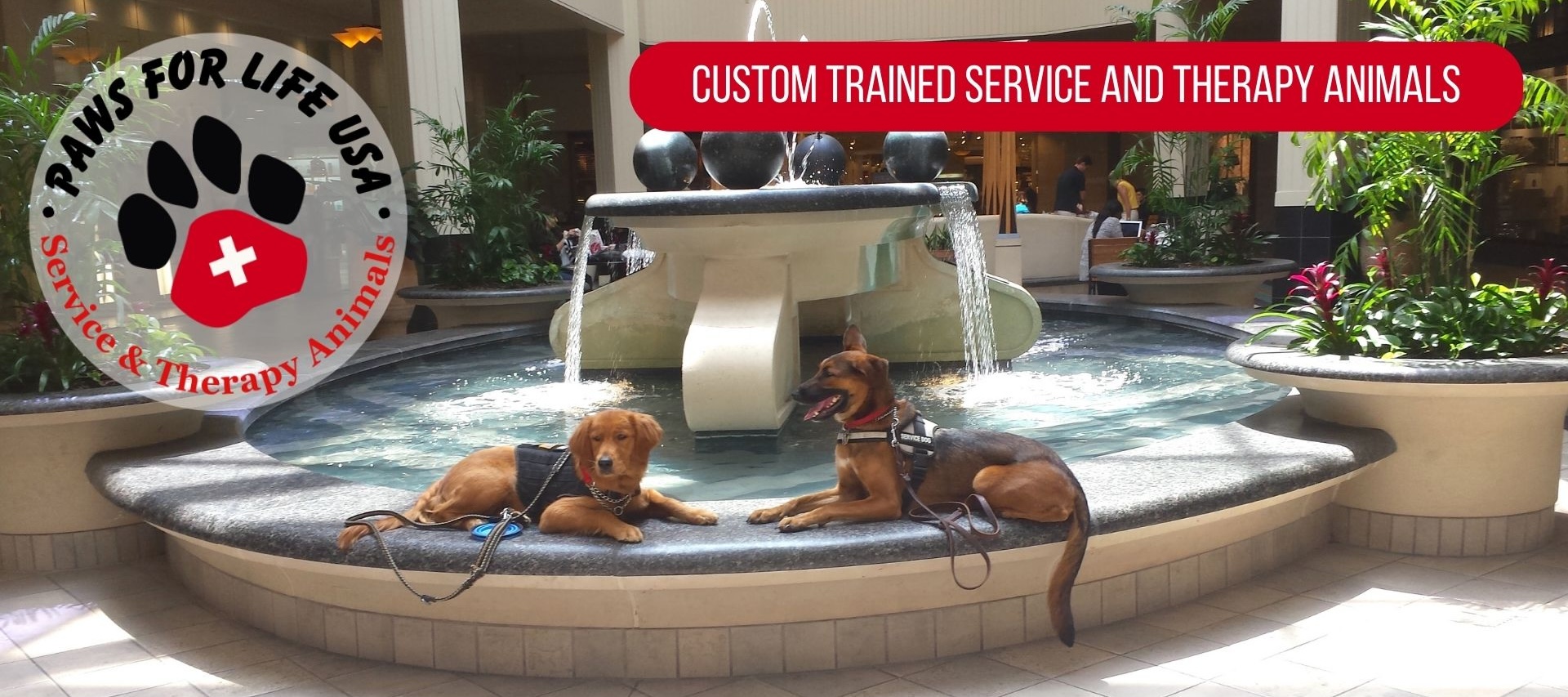Guidance for Handlers of Service and Therapy Animals
Updated June 16, 2020
Service animalsexternal icon are defined as dogs that are individually trained to do work or perform tasks for people with disabilities. A therapy animalexternal icon is used in a type of animal-assisted intervention. In this case, in a goal-directed intervention in which an animal meeting specific criteria is an integral part of the treatment process.
In accordance with the Americans with Disabilities Actexternal icon, service animals must be permitted to remain with their handlers.
We are still learning about the virus that causes COVID-19, but it appears that the virus can spread from people to animals in some situations. CDC is aware of a small number of pets, including dogs and cats, reportedexternal icon to be infected with the virus that causes COVID-19, mostly after close contact with people infected with COVID-19.
If you have a service or therapy animal, follow your local guidance for acceptable business and social practices. Consider local levels of COVID-19 transmission when evaluating the risk to yourself, your animal, and the people you might come into contact with.
Follow CDC’s general recommendations for protecting pets from infection, when possible. For example, avoid unnecessary contact with people or other animals outside the household. Use your best judgment when taking an animal into a location where it could be exposed to COVID-19.
Ways to protect service animals
- Service animals may need to be around other people and animals while working. When possible, both the handler and the animal should stay at least 6 feet away from others.
- If a service animal is sick, call a veterinarian, and do not go out in public with the animal.
- When possible, do not take a service animal into settings in which people are infected with COVID-19 or facilities where you cannot prevent interactions with people who may have COVID-19.
- Avoid contact between sick people and the service animal as much as possible. If contact cannot be avoided, the sick person should wear a cloth face coveringwhen around the animal.
- CDC recommends that everyone wear cloth face coverings in public settings where other social distancing measures are difficult to maintain (e.g., grocery stores and pharmacies), especially in areas of significant community-based transmission.
- Clean and disinfectservice animal collars, vests, leashes or harnesses, and other supplies frequently.
- Do not wipe or bathe service animals with chemical disinfectants, alcohol, hydrogen peroxide, or any other products not approved for animal use. There is no evidence that the virus can spread to people from the skin, fur, or hair of pets.
- Do not put face coverings on service animals. Covering an animal’s face could harm them.
Ways to protect therapy animals
Facilities that normally use therapy animals may not allow them at this time because people in many of these settings are at higher risk for serious illness with COVID-19. Follow local guidance and facility protocols for social distancing, face coverings, and other ways to prevent COVID-19 from spreading. If therapy animals are invited to a facility or other setting, follow the steps below.
- Therapy animal visits require some level of contact between clients and the therapy animal team. When possible, keep animals at least 6 feet away from people and animals not participating in the visit. Handlers and participants should wear a cloth face coveringduring the visit.
- Do not take therapy animals to visits if the animals are sick or have tested positive for the virus that causes COVID-19.
- When deciding if it is safe to visit a household, refer to CDC guidance on When You Can be Around Others After You Had or Likely Had COVID-19.
- People with symptoms of COVID-19should not touch, be close to, or interact with therapy animals. If someone was sick with COVID-19, they should wait until they recover to interact with therapy animals.
- Before and after every contact, the handler and anyone petting or having contact with the animal should wash their hands.
- Do not use items that multiple people handle, particularly if items are brought to multiple facilities between therapy visits (for example, leashes, harnesses, toys, or blankets). If items like leashes must be brought between facilities, disinfectthem after each use or facility.
- Do not let other people handle items that go into the animal’s mouth, such as toys and treats.
- Disinfectitems such as toys, collars, leashes, harnesses, therapy vests and scarves, and food/water bowls frequently.
- Do not allow therapy animals to lick or give ‘kisses’.
- Do not wipe or bathe therapy animals with chemical disinfectants, alcohol, hydrogen peroxide, or any other products not approved for animal use. There is no evidence that the virus can spread to people from the skin, fur, or hair of pets.
- Do not put face coverings on therapy animals. Covering an animal’s face could harm the animal
If you are a service or therapy animal handler, and you get sick with COVID-19 or have symptoms of COVID-19, follow recommendations for what to do if you get sick and recommendations for protecting pets if you get sick.
If your service or therapy animal gets sick after contact with a person with COVID-19, call your veterinarian. If the animal tests positive for the virus that causes COVID-19, follow recommendations for what to do if your pet tests positive.


